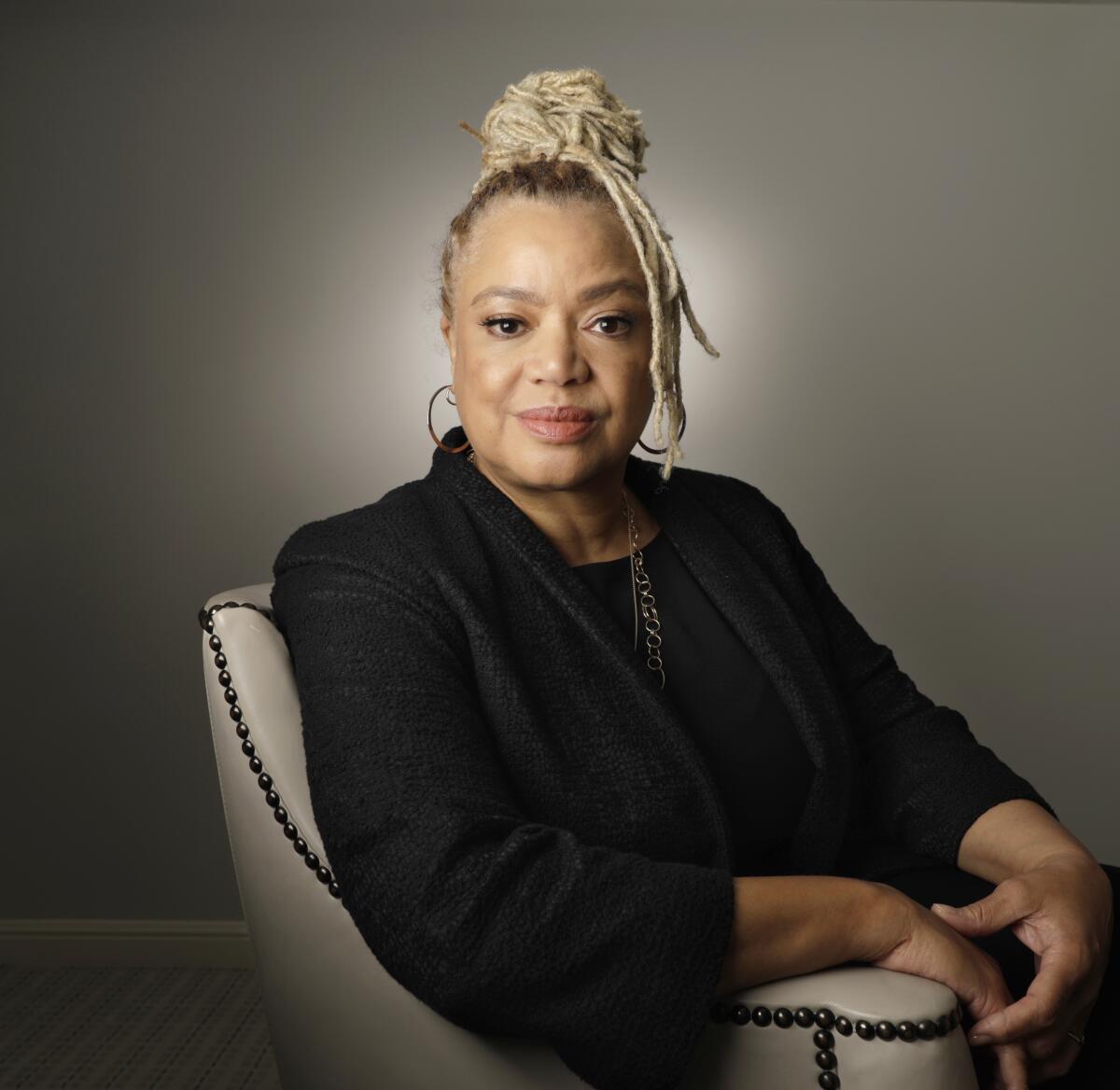Female directors in Hollywood are still underrepresented, but the gap is narrowing

- Share via
The number of women directing top-grossing movies rose to the highest level since 2007, indicating that Hollywood is making modest progress in diversifying its ranks, according to a new report.
A dozen women directed some of the 100 top-grossing films in 2019, representing 10.6% of all directors, up from 4.5% of directors in the same category in 2018, though women of color are still vastly underrepresented among filmmakers, USC Annenberg’s Inclusion Initiative found in a study released Thursday.
One reason for the improvement was that Universal Pictures distributed five films directed by women, including the romantic drama “Queen & Slim.” Earlier last year, it became the first major studio to support the “4% Challenge,” a plan to commit to work with at least one female director on a feature film over the next 18 months.
Paramount Pictures had the worst track record, distributing only three movies from 2007 to 2019 that were directed by women, according to the study. By comparison, Universal had 15 female directors over the same period, including “Queen & Slim” and “Abominable” released last year.
Representatives of Universal and Paramount could not be immediately reached for comment.
“The industry is still so skewed to white men that any forward motion is noted with success,” Melissa Silverstein, an activist for gender equality in Hollywood, said in an interview. “The key is maintaining the forward motion over time.”
Despite making on average better reviewed movies, women from underrepresented race or ethnic groups had the least opportunities, according to the study.
Less than 1% of all directing jobs went to women of color in the 1,300 top movies released from 2007 to 2019 covered in the study, while white men accounted for 82.5%.
Until 2019, only two women of color, Ava DuVernay and Jennifer Yuh Nelson, directed more than one movie among the 1,300 films surveyed. Last year, four more women of color were added to that group, including Kasi Lemmons, who directed Focus Features’ “Harriet,” about the story of famed abolitionist Harriet Tubman
“Reading all of these well laid out stats makes you realize there’s no possible excuse that explains this discrepancy,” said Lemmons via email. “I wonder about the chilling effect these statistics have on women coming up. You would think an art form of dreams and magic, of empathy and humanism would be the exact opposite of blatantly biased. If the movie industry is not a place where a young underrepresented woman can dare to dream of working and thriving, what are we saying?”
While there was no material difference in Metacritic scores by film director gender, films by women from underrepresented race or ethnic groups scored higher on the review aggregator site.
Studios “are missing out on talent because of their own subjective bias,” Stacy L. Smith, who coauthored the report, said in an interview.
In this year’s study, the Annenberg group focused on how women, particularly women of color, were represented behind the camera. Unlike last year’s study, it did not break out specific racial groups.
Of the 113 directors of top 100 films in 2019, 83.2% were white and 16.8% were from underrepresented race or ethnic groups, down from 21.4% in 2018 and substantially below the U.S. Census of 39.6%, according to Annenberg.
Across the 1,300 films from 2007 to 2019, only 4.8% of directors were women.
The survey also highlights the dim prospects for recognition of female directors at the Oscars. Over the last 13 years across the Golden Globes, Directors Guild, Oscars and Critics’ Choice awards, only 5.1% of nominations went to women.
Greta Gerwig, who directed the successful December release “Little Women,’’ is the most likely among female directors to get a best director nomination for the Oscars, according to awards tracking site Gold Derby.
“These findings reveal that hiring practices have started to shift behind the camera in important ways for women,” Smith wrote in the report. “Where more work is needed, however, is to increase access and opportunity for women of color.”
More to Read
Inside the business of entertainment
The Wide Shot brings you news, analysis and insights on everything from streaming wars to production — and what it all means for the future.
You may occasionally receive promotional content from the Los Angeles Times.











